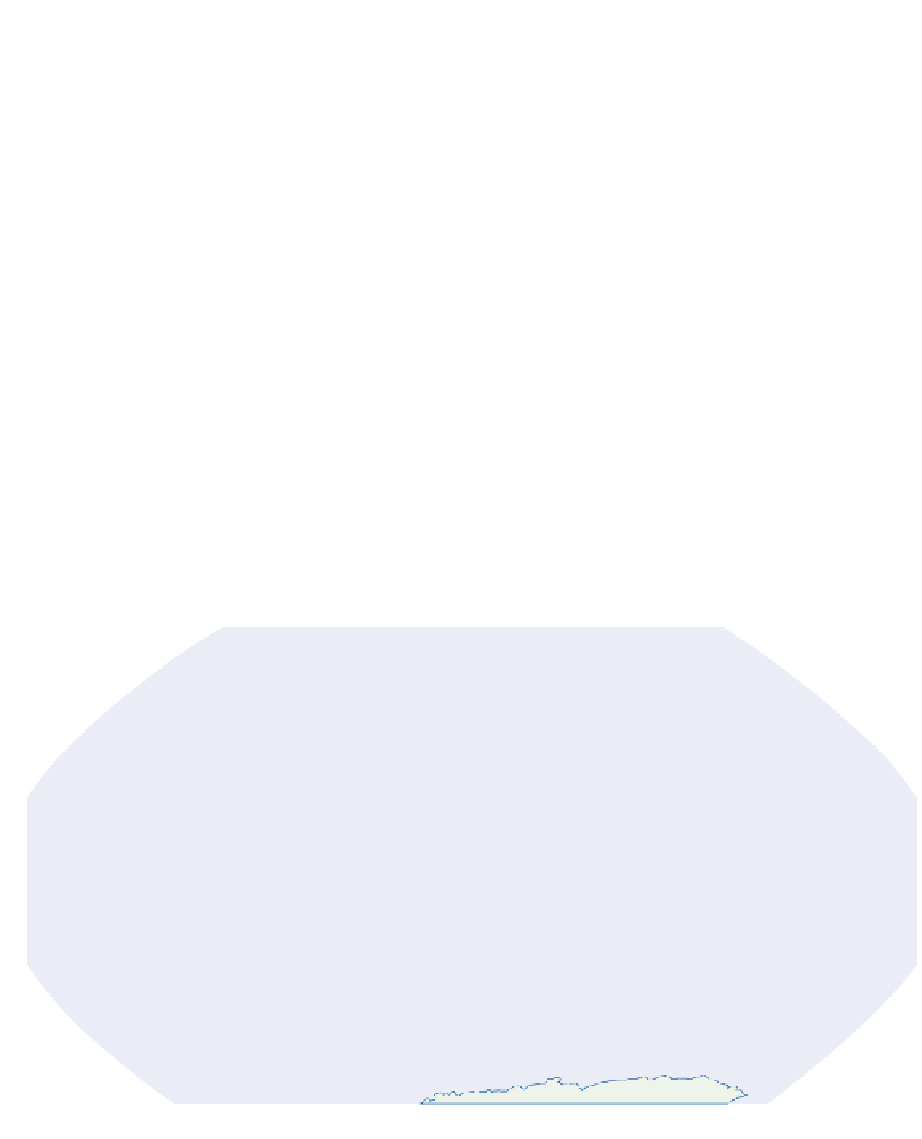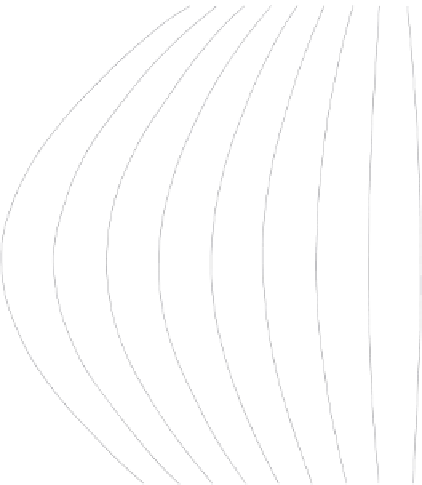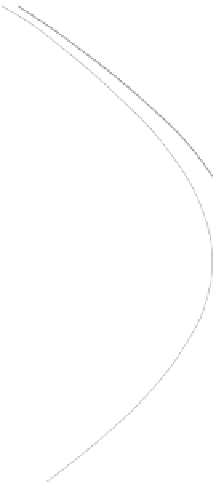Geoscience Reference
In-Depth Information
The intensity of the poleward energy flow is
closely related to the meridional (that is, north-
south) temperature gradient. In winter, this
temperature gradient is at a maximum and in
consequence the hemispheric air circulation is
most intense. The nature of the complex transport
mechanisms will be discussed in Chapter 8C.
As shown in
Figure 3.27B
, ocean currents
account for a significant proportion of the
poleward heat transfer in low latitudes. Indeed,
recent satellite estimates of the required total
poleward energy transport indicate that the
previous figures are too low. The ocean transport
may be 47 percent of the total at 30-35°N and as
much as 74 percent at 20
where Δ
A
= horizontal advection of heat by
currents and
G
= the heat transferred into or out
of storage in the water. The storage is more or less
zero for annual averages.
2 Spatial pattern of the heat
budget components
The mean latitudinal values of the heat budget
components discussed above conceal great
spatial variations.
Figure 3.28
shows the global
distribution of the annual net radiation at the
surface. Broadly, its magnitude decreases
poleward from about 25° latitude. However, as a
result of the high absorption of solar radiation by
the sea, net radiation is greater over the oceans -
exceeding 160W m
-2
N; the Gulf Stream and
Kuro Shio currents are particularly important. In
the Southern Hemisphere, poleward transport is
mainly in the Pacific and Indian Oceans (see
Figure 8.30
). The energy budget equation for an
ocean area must be expressed as
R
n
=
LE
+
H
+
G
+
°
- than
over land areas, where it is about 80-105W m
-2
in
the same latitudes. Net radiation is also lower in
arid continental areas than in humid areas,
because in spite of the increased insolation
in latitudes 15-20
°
Δ
A
80°N
13
60°
27
53
53
53
80
40°
80
133
20°
106
0°
20°
40°
53
60°S
160°W
140°
120°
100°
80°
60°
40°
20°
0°
20°
40°
60°
80°
100°
120°
140°
160°
180°E
Figure 3.28
Global distribution of the annual net radiation at the surface, in W m
-2
.
Source: After Budyko et al. (1962).




























































































































































































































